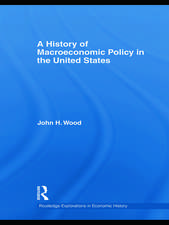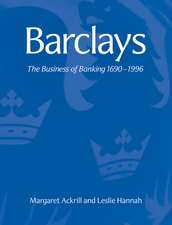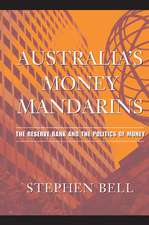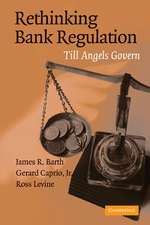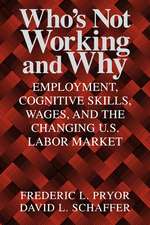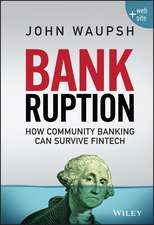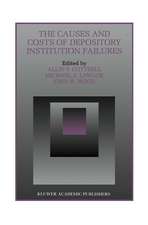A History of Central Banking in Great Britain and the United States: Studies in Macroeconomic History
Autor John H. Wooden Limba Engleză Paperback – 7 dec 2008
| Toate formatele și edițiile | Preț | Express |
|---|---|---|
| Paperback (1) | 357.13 lei 43-57 zile | |
| Cambridge University Press – 7 dec 2008 | 357.13 lei 43-57 zile | |
| Hardback (1) | 894.18 lei 43-57 zile | |
| Cambridge University Press – 5 iun 2005 | 894.18 lei 43-57 zile |
Din seria Studies in Macroeconomic History
-
![Teach Your Kids about Countries [Vol4 ]: Version Adaptada Al Castellano Actual Por Rafael Antunez y Raul Alonso](https://i3.books-express.ro/bs/9781480268180/teach-your-kids-about-countries-vol4.jpg) Preț: 61.51 lei
Preț: 61.51 lei -
 Preț: 167.96 lei
Preț: 167.96 lei -
 Preț: 95.31 lei
Preț: 95.31 lei -
 Preț: 40.48 lei
Preț: 40.48 lei -
 Preț: 53.96 lei
Preț: 53.96 lei -
![Teach Your Kids about Countries [Vol8]: Version Adaptada Al Castellano Actual Por Rafael Antunez y Raul Alonso](https://i2.books-express.ro/bs/9781480268227/teach-your-kids-about-countries-vol8.jpg) Preț: 61.70 lei
Preț: 61.70 lei -
 Preț: 125.81 lei
Preț: 125.81 lei -
 Preț: 64.79 lei
Preț: 64.79 lei -
 Preț: 131.58 lei
Preț: 131.58 lei -
 Preț: 86.92 lei
Preț: 86.92 lei -
 Preț: 63.20 lei
Preț: 63.20 lei - 9%
 Preț: 592.70 lei
Preț: 592.70 lei -
 Preț: 95.96 lei
Preț: 95.96 lei -
![Teach Your Kids about Countries [Vol13]: Version Adaptada Al Castellano Actual Por Rafael Antunez y Raul Alonso](https://i2.books-express.ro/bs/9781480268272/teach-your-kids-about-countries-vol13.jpg) Preț: 61.51 lei
Preț: 61.51 lei -
![Teach Your Kids about Countries [Vol 25]: Version Adaptada Al Castellano Actual Por Rafael Antunez y Raul Alonso](https://i0.books-express.ro/bs/9781480268401/teach-your-kids-about-countries-vol-25.jpg) Preț: 61.51 lei
Preț: 61.51 lei -
 Preț: 54.03 lei
Preț: 54.03 lei -
 Preț: 46.84 lei
Preț: 46.84 lei -
 Preț: 92.61 lei
Preț: 92.61 lei -
![Teach Your Kids about Countries [Vol2]: Version Adaptada Al Castellano Actual Por Rafael Antunez y Raul Alonso](https://i1.books-express.ro/bs/9781480268166/teach-your-kids-about-countries-vol2.jpg) Preț: 61.51 lei
Preț: 61.51 lei -
 Preț: 135.03 lei
Preț: 135.03 lei -
 Preț: 75.99 lei
Preț: 75.99 lei -
 Preț: 104.33 lei
Preț: 104.33 lei -
 Preț: 130.65 lei
Preț: 130.65 lei -
 Preț: 201.10 lei
Preț: 201.10 lei -
 Preț: 83.38 lei
Preț: 83.38 lei -
 Preț: 56.92 lei
Preț: 56.92 lei -
 Preț: 177.10 lei
Preț: 177.10 lei -
 Preț: 62.62 lei
Preț: 62.62 lei -
 Preț: 74.52 lei
Preț: 74.52 lei -
 Preț: 123.49 lei
Preț: 123.49 lei -
![Teach Your Kids about Countries [Vol 17]: Version Adaptada Al Castellano Actual Por Rafael Antunez y Raul Alonso](https://i2.books-express.ro/bs/9781480268326/teach-your-kids-about-countries-vol-17.jpg) Preț: 61.51 lei
Preț: 61.51 lei -
![Teach Your Kids about Countries [Vol 22]: Version Adaptada Al Castellano Actual Por Rafael Antunez y Raul Alonso](https://i2.books-express.ro/bs/9781480268371/teach-your-kids-about-countries-vol-22.jpg) Preț: 61.51 lei
Preț: 61.51 lei -
![Teach Your Kids about Countries [Vol 5]: Version Adaptada Al Castellano Actual Por Rafael Antunez y Raul Alonso](https://i4.books-express.ro/bs/9781480268197/teach-your-kids-about-countries-vol-5.jpg) Preț: 61.51 lei
Preț: 61.51 lei -
 Preț: 208.23 lei
Preț: 208.23 lei -
 Preț: 59.67 lei
Preț: 59.67 lei -
 Preț: 96.04 lei
Preț: 96.04 lei - 8%
 Preț: 470.07 lei
Preț: 470.07 lei -
 Preț: 96.45 lei
Preț: 96.45 lei -
 Preț: 55.99 lei
Preț: 55.99 lei -
 Preț: 69.21 lei
Preț: 69.21 lei -
 Preț: 72.83 lei
Preț: 72.83 lei -
 Preț: 51.11 lei
Preț: 51.11 lei -
 Preț: 88.56 lei
Preț: 88.56 lei -
 Preț: 51.36 lei
Preț: 51.36 lei -
 Preț: 78.74 lei
Preț: 78.74 lei -
 Preț: 93.90 lei
Preț: 93.90 lei - 20%
 Preț: 45.72 lei
Preț: 45.72 lei -
 Preț: 212.46 lei
Preț: 212.46 lei -
 Preț: 71.19 lei
Preț: 71.19 lei
Preț: 357.13 lei
Nou
Puncte Express: 536
Preț estimativ în valută:
68.34€ • 71.54$ • 56.54£
68.34€ • 71.54$ • 56.54£
Carte tipărită la comandă
Livrare economică 07-21 aprilie
Preluare comenzi: 021 569.72.76
Specificații
ISBN-13: 9780521741316
ISBN-10: 0521741319
Pagini: 458
Ilustrații: 7 tables
Dimensiuni: 152 x 229 x 24 mm
Greutate: 0.61 kg
Ediția:1
Editura: Cambridge University Press
Colecția Cambridge University Press
Seria Studies in Macroeconomic History
Locul publicării:New York, United States
ISBN-10: 0521741319
Pagini: 458
Ilustrații: 7 tables
Dimensiuni: 152 x 229 x 24 mm
Greutate: 0.61 kg
Ediția:1
Editura: Cambridge University Press
Colecția Cambridge University Press
Seria Studies in Macroeconomic History
Locul publicării:New York, United States
Cuprins
1. Understanding monetary policy; 2. An introduction to central bankers; 3. Making a central bank: I. Surviving; 4. Making a central bank: II. Looking for a rule; 5. Making a central bank: III. Ends and means; 6. Central banking in the United States, 1790–1914; 7. Before the crash: the origins and early years of the Federal Reserve; 8. The fall and rise of the Federal Reserve, 1929–51; 9. Central banking in the United States after the Great Depression, 1951–71; 10. The Bank of England after 1914; 11. Rules vs. authorities; 12. Permanent suspension; 13. Back to the beginning? New contracts for new companies.
Recenzii
'The forces and personalities shaping the development of central banking are carefully detailed in this excellent and readable book on central banking in the United States and Great Britain.' Lee Hoskins, Former President, Federal Reserve Bank of Cleveland
'The book is an ambitious and successful undertaking. It should be required reading for anyone concerned with monetary institutions and the battle between rules and discretion in policymaking. John H. Wood makes clear that the conflicts between rules and discretion will continue, and through his deft historical analysis he reminds us that the choices we make today will have important consequences for the future.' Edward Prescott, Nobel Laureate, Federal Reserve Bank of Minneapolis
'By bringing the pieces together and focusing on the evolution of central bankers this book enables the reader to see the forest rather than the trees and to appreciate one of the successes of economics. This book will be a useful resource for both economic historians and monetary economists looking for a broad overview of the evolution of Anglo-American central banking and monetary theory.' Angela Redish, EH.Net
'Economists and ordinary people have always found it difficult to understand central bankers. John H. Wood here provides a reason: central bankers themselves quite often did not fully understand their functions and the impacts of their decisions on macroeconomic outcomes. That finally has changed, Wood argues, because central banks now appear to have a 'contract' to provide price-level stability, and they can deliver on it. But the contract may be tenuous, as it is subject to political exigencies. Wood's rich history of British and American experience thus prepares us to think seriously about the future of central banking.' Richard Sylla, New York University
'John Wood has undertaken the ambitious and novel task of retelling the old story of central banking by juxtaposing the histories of the Bank of England and the Federal Reserve, including its precursors, with the object of revealing the similarities and diversities of the challenges as well as their responses. A distinctive and singular achievement.' Elmus Wicker, Indiana University
'The book does an excellent job in providing a coherent, detailed and readable account of the forces and personalities that have shaped the development of central banking in Britain and the United States.' Central Banking
'This is a well-written, highly readable book … Throughout the book, Wood makes excellent use of his (mostly published) sources. He quotes extensively - often the quotes tell the story more or less by themselves - and he cleverly juxtaposes quotes from different eras, thereby demonstrating that time and circumstances may change but the basic issues in central banking by and large remain the same. … In short, Wood's book offers a catalogue of central banking theory brought to life through a vivid depiction of more than two centuries of central banking practice.' Financial History Review
'The book is an ambitious and successful undertaking. It should be required reading for anyone concerned with monetary institutions and the battle between rules and discretion in policymaking. John H. Wood makes clear that the conflicts between rules and discretion will continue, and through his deft historical analysis he reminds us that the choices we make today will have important consequences for the future.' Edward Prescott, Nobel Laureate, Federal Reserve Bank of Minneapolis
'By bringing the pieces together and focusing on the evolution of central bankers this book enables the reader to see the forest rather than the trees and to appreciate one of the successes of economics. This book will be a useful resource for both economic historians and monetary economists looking for a broad overview of the evolution of Anglo-American central banking and monetary theory.' Angela Redish, EH.Net
'Economists and ordinary people have always found it difficult to understand central bankers. John H. Wood here provides a reason: central bankers themselves quite often did not fully understand their functions and the impacts of their decisions on macroeconomic outcomes. That finally has changed, Wood argues, because central banks now appear to have a 'contract' to provide price-level stability, and they can deliver on it. But the contract may be tenuous, as it is subject to political exigencies. Wood's rich history of British and American experience thus prepares us to think seriously about the future of central banking.' Richard Sylla, New York University
'John Wood has undertaken the ambitious and novel task of retelling the old story of central banking by juxtaposing the histories of the Bank of England and the Federal Reserve, including its precursors, with the object of revealing the similarities and diversities of the challenges as well as their responses. A distinctive and singular achievement.' Elmus Wicker, Indiana University
'The book does an excellent job in providing a coherent, detailed and readable account of the forces and personalities that have shaped the development of central banking in Britain and the United States.' Central Banking
'This is a well-written, highly readable book … Throughout the book, Wood makes excellent use of his (mostly published) sources. He quotes extensively - often the quotes tell the story more or less by themselves - and he cleverly juxtaposes quotes from different eras, thereby demonstrating that time and circumstances may change but the basic issues in central banking by and large remain the same. … In short, Wood's book offers a catalogue of central banking theory brought to life through a vivid depiction of more than two centuries of central banking practice.' Financial History Review
Notă biografică
Descriere
This 2005 treatment compares the central banks of Britain and the United States.

